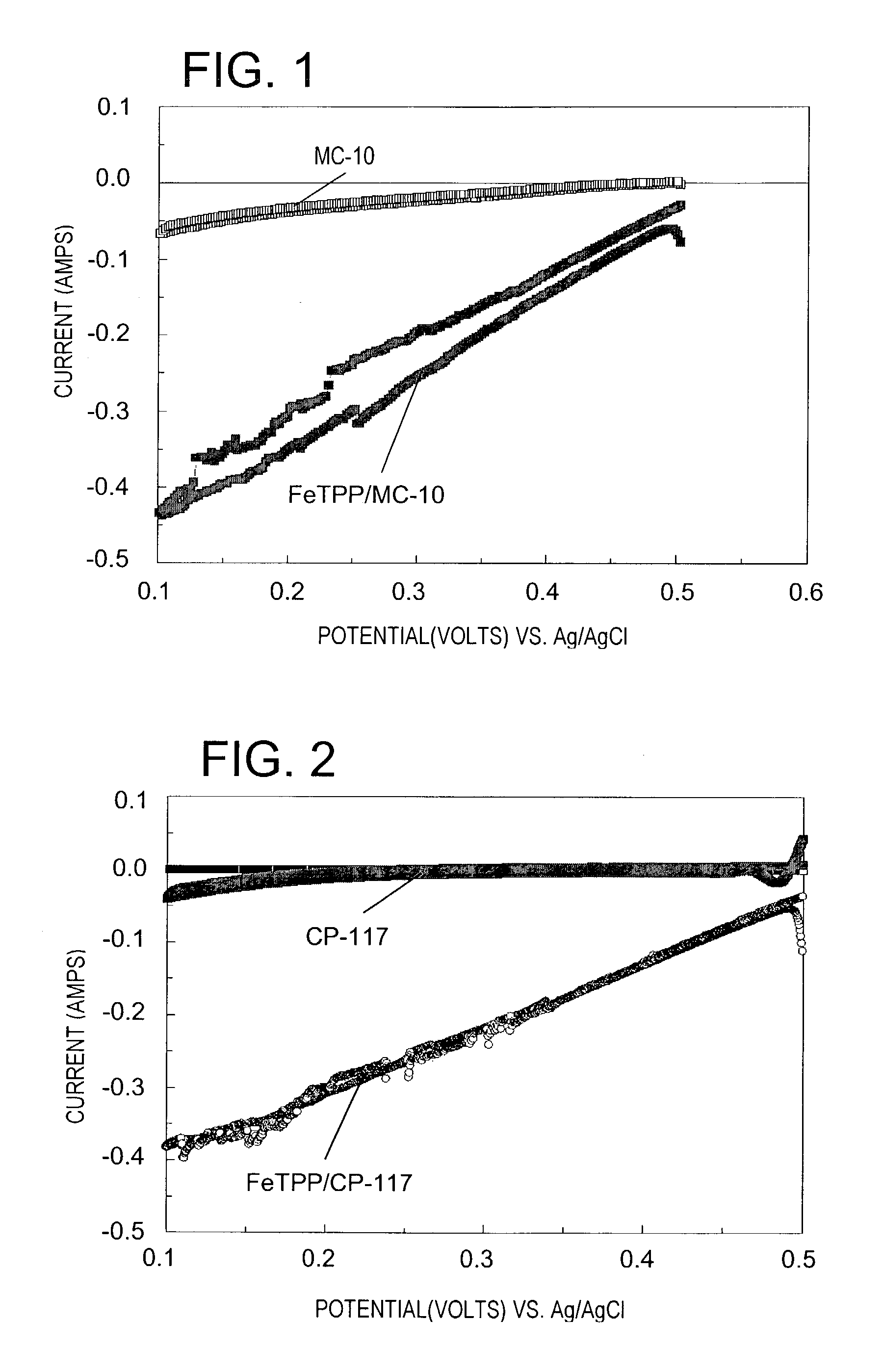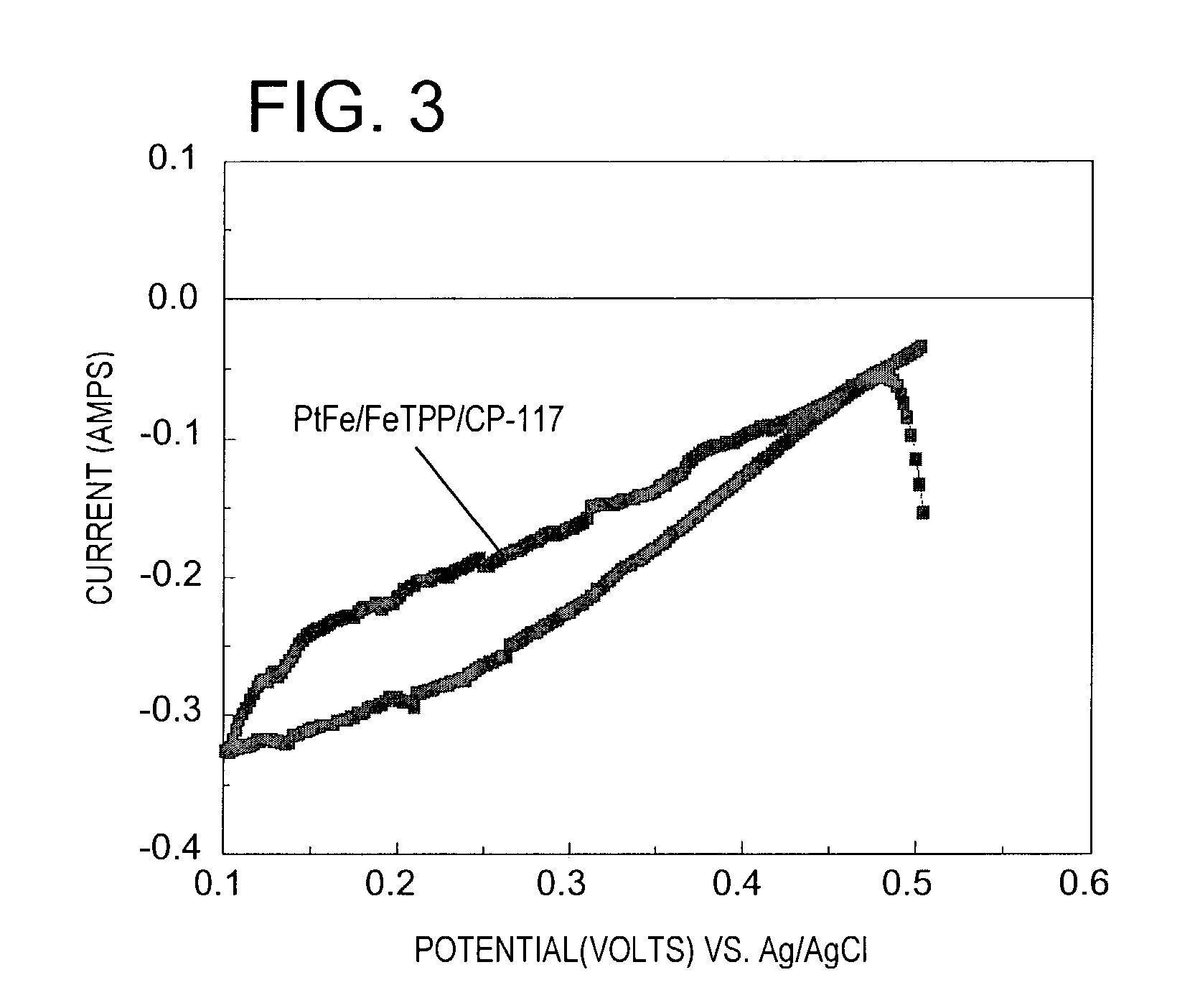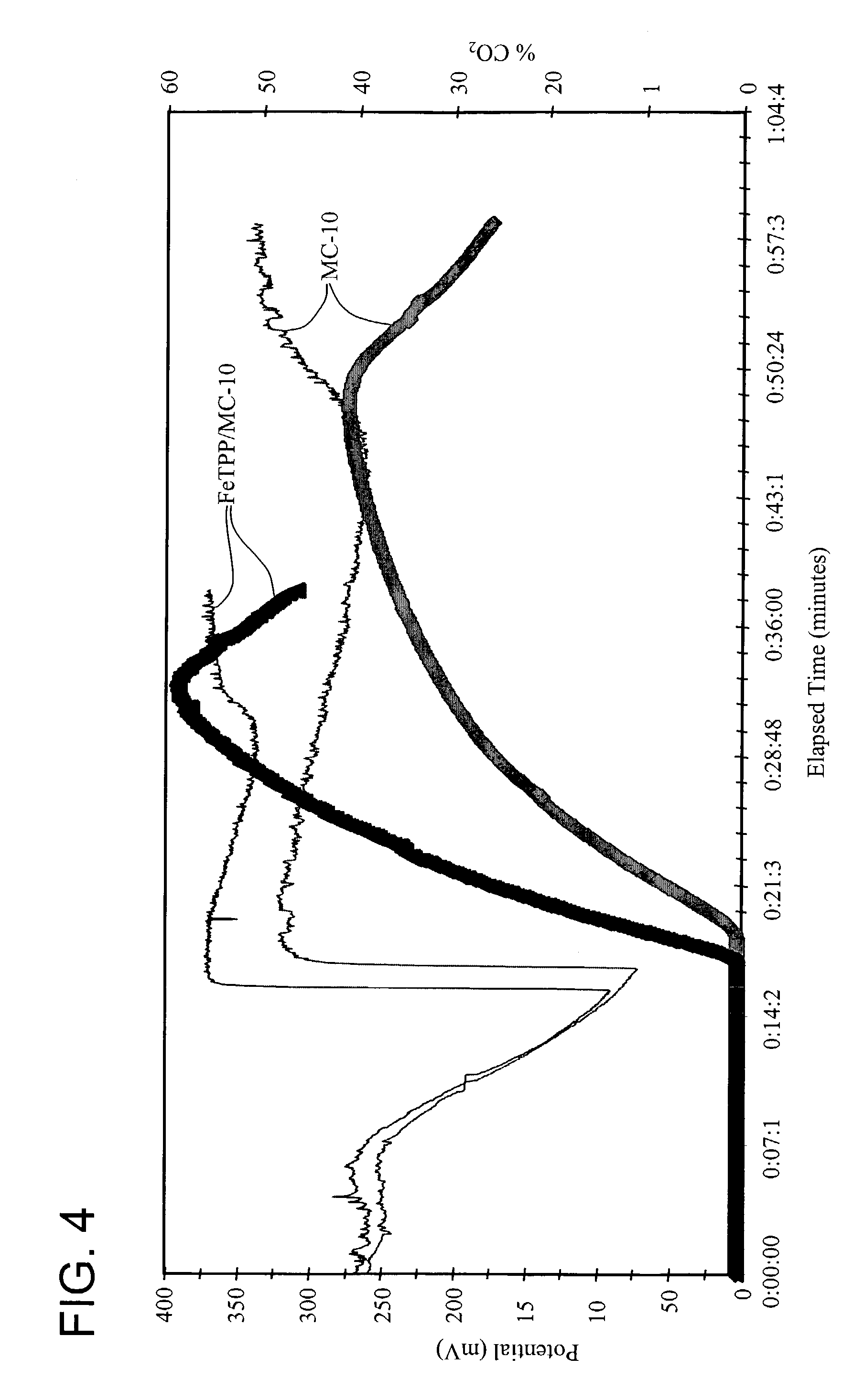Oxidation catalyst and process
a catalyst and oxidation technology, applied in the field of redox reaction catalysts, can solve the problems of high loss of costly noble metals into the reaction solution undesirable formaldehyde by-product, etc., to promote the reduction of molecular oxygen, high productivity, and high productivity
- Summary
- Abstract
- Description
- Claims
- Application Information
AI Technical Summary
Benefits of technology
Problems solved by technology
Method used
Image
Examples
example 1
[0118]A particulate carbon catalyst designated MC-10 (8 g) prepared in accordance with Chou, U.S. Pat. No. 4,696,772, and iron (III) chloride complexed with tetraphenylporphyrin (FeTPP) (2 g) were stirred into acetone (400 ml) with continued stirring for 48 hours. The solids were separated from the slurry by filtration and the filtered solids pyrolyzed at 800° C. for 2 hours under a constant flow of argon. Metal analysis of the pyrolysis product revealed that the Fe content of the solids was 1.1% by weight.
[0119]A sample (5 mg) of the Fe / N / carbon pyrolysis product designated FeTPP / MC-10 was suspended in a solution of 0.1 M orthophosphoric acid (100 ml) at 70° C. and the suspension subjected to cyclic voltammetry in the reduction of molecular oxygen using a Model 273A potentiostat / galvanostat (Princeton Applied Research, Oak Ridge, Tenn.). The applied potential was varied from 0.5 to 0.1 volts vs. an Ag / AgCl electrode immersed in the suspension. The cyclic voltammetry cell included a...
example 2
[0122]A second Fe / N / carbon catalyst in accordance with the present invention was prepared as described in Example 1 except that a particulate carbon support sold under the trade designation CP-117 (Engelhard Corp., Iselin, N.J.) was substituted for the MC-10 particulate carbon catalyst. The modified CP-117 carbon designated FeTPP / CP-117 was subjected to cyclic voltammetry in the reduction of molecular oxygen in the manner described in Example 1. Again a control was run using unmodified CP-117. The results are set forth in FIG. 2. Note that although the unmodified CP-117 carbon support is much less active with respect to oxygen reduction than is the MC-10 particulate carbon catalyst, FeTPP / CP-117 resulting from treatment of CP-117 with FeTPP and pyrolysis is nevertheless quite effective for the purpose.
example 3
[0123]A third Fe / N / carbon catalyst was prepared by depositing platinum (5% by weight) and an iron promoter (0.5% by weight) on the FeTPP / CP-117 modified carbon prepared in Example 2. Deposition of the Pt active phase and the Fe promoter was carried out in the manner described in U.S. Pat. No. 6,417,133. This catalyst, designated PtFe / FeTPP / CP-117, was also subjected to cyclic voltammetry in the reduction of molecular oxygen in the manner described in Example 1. The results are shown in FIG. 3.
PUM
| Property | Measurement | Unit |
|---|---|---|
| particle size distribution | aaaaa | aaaaa |
| temperature | aaaaa | aaaaa |
| weight ratio | aaaaa | aaaaa |
Abstract
Description
Claims
Application Information
 Login to View More
Login to View More - R&D
- Intellectual Property
- Life Sciences
- Materials
- Tech Scout
- Unparalleled Data Quality
- Higher Quality Content
- 60% Fewer Hallucinations
Browse by: Latest US Patents, China's latest patents, Technical Efficacy Thesaurus, Application Domain, Technology Topic, Popular Technical Reports.
© 2025 PatSnap. All rights reserved.Legal|Privacy policy|Modern Slavery Act Transparency Statement|Sitemap|About US| Contact US: help@patsnap.com



